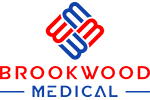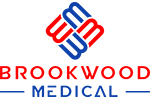The Importance of Fit Testing KN95 Face Masks

In recent times, face masks have become part of our daily lives as we navigate through the COVID-19 pandemic. With the abundance of face mask options available, it can be overwhelming to choose the right one for your needs. Among the various types of masks on the market, KN95 face masks have gained significant popularity due to their effectiveness in filtering out particles and protecting the wearer. However, simply using a KN95 mask is not sufficient to ensure maximum protection.
The Importance of Fit Testing
Fit testing is a crucial step in using KN95 face masks properly. It involves assessing the seal between the mask and the wearer's face to ensure a proper fit and minimize the risk of exposure to harmful particles. Fit testing helps identify any gaps or leaks that may compromise the effectiveness of the mask, allowing individuals to make necessary adjustments or choose an alternative mask if needed.
Fit testing is particularly important for KN95 masks because they are designed to have a close facial fit. Unlike some other types of masks, such as surgical masks, KN95 masks are intended to create a seal around the nose and mouth area. This seal is essential for ensuring that air, along with any airborne particles, passes through the filtration system of the mask rather than leaking through gaps in the seal. Without a proper fit, the mask may not provide the expected level of protection.
Types of Fit Testing
There are two main types of fit testing for KN95 masks: qualitative fit testing and quantitative fit testing.
Qualitative Fit Testing
Qualitative fit testing is a subjective test that relies on the wearer's sense of taste or smell to determine the mask's fit. The test involves wearing the mask and being exposed to a substance with a distinct taste or smell, such as saccharin or Bitrex. If the wearer can detect the substance while wearing the mask, it indicates a poor fit and the mask may need adjustment or replacement.
While qualitative fit testing is relatively simple and cost-effective, it may not provide precise measurements of the mask's fit. It is best used as a screening tool to identify masks that are clearly not providing an adequate seal.
Quantitative Fit Testing
Quantitative fit testing, on the other hand, is a more objective and accurate method of assessing the mask's fit. This type of fit testing utilizes specialized equipment to measure the amount of leakage around the mask while the wearer performs specific movements. It provides a numerical value known as a fit factor, which determines the effectiveness of the mask in sealing out particles of various sizes.
Compared to qualitative fit testing, quantitative fit testing offers a more precise evaluation of mask fit and is generally considered the gold standard. This method is often used in high-risk environments or for individuals who require a higher level of protection, such as healthcare workers or first responders.
The Benefits of Fit Testing KN95 Face Masks
Fit testing KN95 masks offers several benefits that contribute to overall safety and peace of mind:
1. Enhanced Protection
By ensuring the mask fits properly, fit testing can significantly enhance the level of protection provided by KN95 masks. A proper seal helps prevent the inhalation of harmful particles, including viruses and bacteria. This is particularly crucial in high-risk environments or situations where individuals are exposed to a higher concentration of airborne contaminants.
2. Personalized Fit
Everyone's face shape and size are different, and a "one-size-fits-all" approach may not be suitable for KN95 masks. Fit testing allows individuals to assess the mask's fit on their specific face shape and make adjustments if needed. This personalized fit ensures maximum comfort and effectiveness, reducing the chances of the mask being worn improperly or removed during use due to discomfort.
3. Compliance with Regulations
Fit testing is not only important for personal safety but also for regulatory compliance. In certain industries, such as healthcare or construction, fit testing may be a regulatory requirement. By conducting fit testing and ensuring a proper fit, individuals can meet the necessary standards and guidelines set by regulatory bodies.
4. Cost Optimization
Proper fit testing can help individuals avoid unnecessary expenses. If a KN95 mask does not fit properly, it may lead to increased consumption as individuals feel the need to replace masks more frequently. By identifying the right fit early on, individuals can optimize their mask usage and minimize unnecessary costs.
5. Peace of Mind
Knowing that your KN95 mask fits properly provides peace of mind in times of uncertainty. It allows you to feel confident that you are taking the necessary precautions to protect yourself and others. This psychological comfort can be particularly valuable for individuals who are more vulnerable to severe illness, such as the elderly or those with underlying health conditions.
Conclusion: Protecting Yourself and Others
In conclusion, fit testing plays a vital role in optimizing the effectiveness of KN95 face masks. This process ensures the mask creates a proper seal, providing enhanced protection against harmful particles. Whether through qualitative or quantitative fit testing, taking the time to assess and adjust the fit of your KN95 mask is crucial for personal safety, regulatory compliance, and peace of mind. Remember, protecting yourself also means protecting others, and a properly fitted KN95 mask is an essential tool in the fight against the spread of COVID-19.






